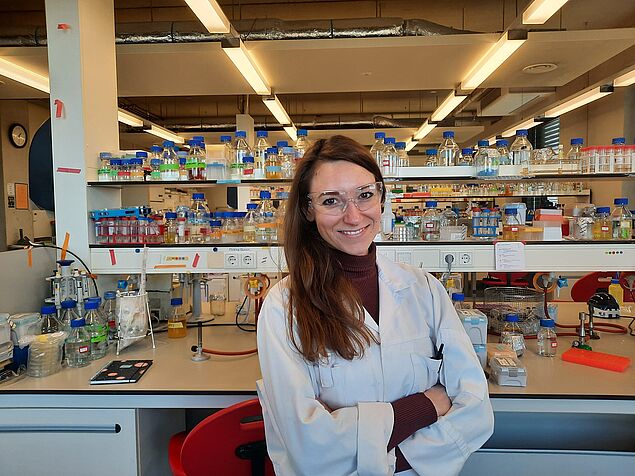The molecular network of archaeal argonautes
Schrödinger-Programm
Ribonucleic acid (RNA) is an important building block of life, as it is formed upon transcription of a gene and further translated into a protein. Furthermore, some viruses carry a RNA genome. In eukaryotic cells, e.g. humans and plants, sophisticated molecular mechanisms are in place that specifically downregulate the number of RNA molecules in the cell. This can lead to the elimination of foreign RNA viruses but also to the regulation of the protein expression of certain host genes. The latter ensures that proteins are expressed to certain levels at specific times, leading to a balanced cell cycle. One of these regulatory mechanisms is the RNA interference pathway (RNAi), which operates via the key enzyme Argonaute (Ago). Agos are among the few enzymes that work in concert with small nucleic acids to exert their specific mechanism: Agos bind to short pieces of RNA, called "guides", that base-pair with a complementary RNA molecule in the cell. The specific base-pairing allows the Ago enzyme to easily identify and bind to a specific target RNA molecule in the cell. While active Agos function like molecular scissors and cut the bound RNA, some Ago variants are inactive for cleavage. These inactive Agos remain bound to the RNA molecule, thereby inhibiting protein synthesis. Collectively, Agos regulate a plethora of different RNA molecules in the eukaryotic cell – even in us humans - which is essential for our proper development and sometimes even survival. Hence, the discovery of the Ago-centered RNAi pathway in eukaryotes is considered a scientific milestone and was awarded the Nobel Prize.
Even if Argonaute enzymes have become eukaryotic flagships, they are also found in the simplest and oldest cells on our planet, namely the bacteria and the archaea. Archaea are considered to be the ancestors of the first eukaryotic cell, which means that Agos may have originated in these cells long before the emergence of the first eukaryotes and were later inherited by those. This close relationship raises the question of whether these Ago ancestors also regulate gene expression and virus defense in the archaeal cell, or whether they perform other functions (in addition). Biochemical studies show that archaeal Agos also use small nucleic acids to recognize target molecules. However, unlike in eukaryotes, some archaeal Agos can recognize not only RNA but also DNA using RNA or DNA guides. Apart from the biochemical characterizations, however, the biological function of these ancestral Agos remains largely unexplored. This work aims to characterize the molecular mechanisms and biological roles of selected active and inactive archaeal Agos. By combining in vivo and in vitro studies, a comprehensive picture of the roles of archaeal Agos will be established which will reveal functional differences and similarities between active and inactive archaeal and eukaryotic Agos, which might provide insights into their evolution.
Duration: 01.1.2022 - 31.07.2025
Funding agency: Austrian Science Fund (FWF): J 4611
Project leader: Isabelle Anna Zink




